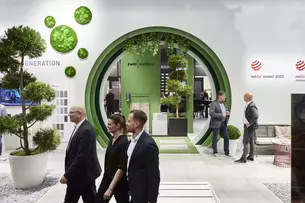
Global climate change has been making itself increasingly felt in recent years with heat waves, forest fires, flooding, heavy rain and severe weather. This is having a massive impact, including on the construction industry. New solutions are needed to make buildings and entire cities more resilient and to drive the energy transition. For all experts in the planning and construction industry, it is therefore particularly important to monitor the factors leading to climate change and to identify the challenges at an early stage. Learn more about this at BAU 2023 and experience innovative approaches to climate change solutions from the construction industry.
One of the most hotly debated topics of our time is climate change. To a large extent, the events intertwined with climate change, such as global warming, are also due to human actions as an intervention in nature. The following five reasons deserve special mention here:

For activities in the construction industry, climate change is a significant issue because the energy used for buildings consists of precisely these fossil fuels. Fossil energy used in the construction industry alone accounts for 25 percent of all greenhouse gas emissions in the European Union.
The construction industry has an opportunity to mitigate climate change through sustainable processes and energy-efficient construction and design. The key points of sustainability in construction are: using existing resources consciously, reducing energy and raw material consumption, and protecting the environment. Here, the entire life cycle is considered, from planning and construction to the use and deconstruction of buildings. The three pillars of sustainability stand for this:

The three pillars of sustainability are becoming increasingly important as extreme weather conditions become part of our everyday lives - as evidenced not least by the dry spells, heat waves and heavy downpours of recent years. And the construction industry is doubly affected by climate change: On the one hand, it needs to find solutions that make urban and rural areas more resistant to extreme weather conditions. On the other hand, it is called upon to help implement the goals of the energy transition - climate neutrality by 2045. Energy-efficient design and construction are essential to counter climate change.

In order for buildings to provide protection against extreme weather conditions, they must be stable and solidly built. Robust construction is the keyword. The building envelope plays a crucial role here, because solid components are capable of both storing heat and protecting against storms. Concepts that can cope with heavy rainfall in cities with sealed surfaces are in demand. This is because infiltration-capable traffic surfaces, urban green spaces or green roofs can store rainwater for a short time or allow it to seep away in a targeted manner to relieve the burden on the sewer system. So-called "sponge cities" are forward-looking.
Since more than a third of EU-wide greenhouse gas emissions are attributable to the construction industry, the responsibility is particularly great. Nowadays, new buildings are subject to strict guidelines that follow sustainability principles. Especially when it comes to heating and cooling. But old buildings also follow the sustainable motto and are renovated to avoid the use of exclusively new building materials. Here, the entire construction industry must think along with us and convert old buildings sustainably.
In order to achieve decarbonization—and thus a permanently carbon-free construction industry—ecologically valuable, sustainable building materials are also required. This is the only way the construction industry can mitigate climate change.